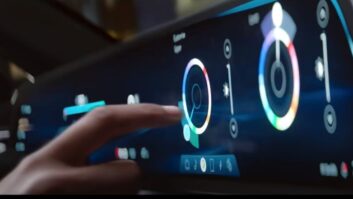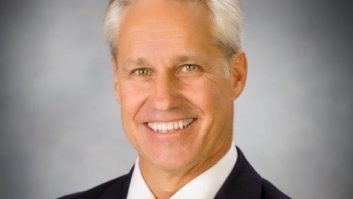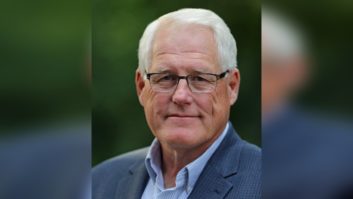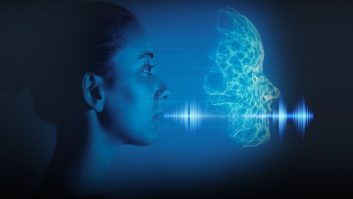Outside this country, the Eureka-147 standard for digital audio broadcasting is in various stages of development, ranging from countries that have functioning systems in several cities, such as the United Kingdom and Canada, to countries that are expanding their offerings, as is France.
Some countries still are testing the technology, such as Australia and Korea.
Still other countries are watching IBOC development in the United States, hoping to implement this standard overseas.
At NAB2002, the president of the company promoting in-band, on-channel DAB said the Eureka standard is an “abject failure.” Ibiquity Digital President/CEO Robert Struble said only 50,000 Eureka-147 receivers are in use worldwide.
More than 230 million potential listeners around the world now can receive more than 400 different DAB services, according to the World DAB Forum, a non-government consortium of companies that supports the implementation of the Eureka-147 standard for DAB.
Digital Radio Mondiale, a consortium of major international broadcasters and equipment manufacturers, is proceeding with its system for digital broadcasting on the long-, medium- and shortwave bands.
DRM and most of the other companies mentioned in this article presented updates of their systems to attendees of NAB2002 at a panel session dedicated to DAB worldwide.
DRM tests
During NAB2002, DRM demonstrated the system with test broadcasts from Radio Nederlands’ site on Bonaire in the Caribbean, WEWN shortwave in Alabama and Radio Canada International in Sackville, New Brunswick. It was the latest in a series of tests that have included both medium-wave and shortwave broadcasters in Europe.
Most of the medium-wave testing has taken place in Germany, where DRM used a three-transmitter network around Berlin and several smaller transmitters elsewhere in the country. In one test, said Peter Jackson of DRM partner Merlin Communications, the system produced usable DAB coverage in a 75-mile radius around the transmitter – running at just 1 kilowatt.
Of shortwave tests, Jackson said, in a 3,100-mile test from Sackville to Germany, “we had one dropout of 40 milliseconds duration in a 56-minute transmission.”
The tests have opened up potential uses for some neglected bands as well. One series of experiments in Britain is using the 26 MHz shortwave band for short-distance, low-power DAB transmissions. Jackson says several countries are considering using the band to relieve crowded local FM dials.
DRM has focused on offering a path to DAB that will be low-cost for both broadcasters and listeners, Jackson said. Most broadcasters have been able to use their existing transmitters for DAB with only minor modifications, he said, while receivers will soon be available at costs far lower than competing DAB platforms.
One DRM partner, Germany’s Fraunhofer Institute, intends to make software available to allow amateur radio operators and DXers to listen to DRM broadcasts with their receivers and PCs.
Within a few years, Jackson hopes, shortwave broadcasters will begin replacing some of their analog signals with DRM digital on a full-time basis, opening up opportunities. The BBC is developing a receiver that can listen to four DRM channels at once, constantly selecting the best available signal.
On the other end of the transmission chain, Jackson said, work is underway to allow DRM transmitters to be controlled remotely by receivers stationed in target areas. The goal is to adjust dynamically among DRM’s various transmission modes to optimize reception quality.
Japan goes for satellite
On the other side of the globe, Japan is preparing to join the United States in offering satellite-based DAB to listeners.
Its system, “Digital System E,” will use the 2630-2655 MHz band. Like the XM Satellite Radio and Sirius Satellite Radio systems here it will transmit to small omni-directional antennas, using terrestrial fill-in transmitters to augment the satellite signal.
But instead of being aimed predominantly at listeners in cars, the Japanese system will target tiny handheld receivers, to be offered both as cards for personal digital assistants and as stand-alone units.
In addition to audio, Japanese DAB listeners will get streaming video at low bit rates as part of the service. Initial prototypes call for a screen with 320×240 resolution, with slightly larger screens to be offered for in-car installations. The Japanese system also will be bi-directional, said developer Shuji Hirakawa of Toshiba, using mobile-phone technology to provide a return channel for interactive features such as traffic reports.
“One challenge now,” Hirakawa said, “is how to operate complicated multimedia and data broadcasting without requiring complex manipulation by drivers.”
The Japanese system will join a more conventional terrestrial DAB system and an experimental system using a portion of Japan’s digital TV spectrum. It is expected to enter commercial service in the spring of 2004. Tests from terrestrial transmitters are planned next year, with the Mobile Broadcasting Corporation’s MB-SAT satellite due for launch in October 2003.
A satellite radio system not discussed in the session is Global Radio, a satellite radio system in development for Europe. Based in Luxembourg, the company is raising financing and targets a 2005 launch for its subscription service.
WorldSpace, the company offering subscription satellite digital radio to the third world on portable receivers, has launched two satellites, aimed at serving audiences in Africa, Asia, the Middle East and Western Europe. A third satellite, to serve Latin America and the Caribbean, will follow, although there is no specific launch date for this satellite.
Another terrestrial DAB system is being tested on the Isle of Man, in the Irish Sea between England and Ireland. The island is the test site for a cooperative network that employs both Eureka-147 DAB and third-generation, or 3G, wireless data transmission.
A private operator that took over much of the BBC’s transmission network called Crown Castle, together with Manx Telecom, wireless operator MMO2 and British broadcaster Virgin Radio all operate the Isle of Man system.
At the heart of the DAB portion of the system is a transmitter carrying seven digital audio services supplied by Virgin. But in addition to sitting back and listening, users of the test system can interact with their radios.
A jukebox feature allows listeners to choose their own playlists, with music fed back to the system from Virgin in London. The system also incorporates data services such as tourist information, offering advertisers new opportunities to target listeners – perhaps better described as wireless users – through ads on the screens of the receivers.
The receivers are on the market on the Isle of Man. The units are half the size of a typical cell phone, and feature color screens.
The Isle of Man system joins a series of Eureka-147 multiplexes in Britain that has been providing Eureka-147 service to much of the nation’s population for more than a year.












